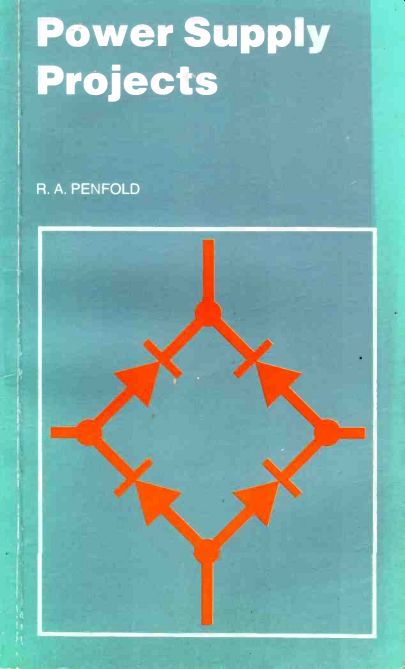| Home | Audio mag. | Stereo Review mag. | High Fidelity mag. | AE/AA mag. |
INTRODUCTION [see below, this page]
SECTION 1 POWER SUPPLIES
Unregulated Supplies Full Wave Rectification Bridge Rectifier Drawbacks Choosing Components Rectifier Ratings Series Parallel Transformers Improved Smoothing Fusing
SECTION 2 FIXED VOLTAGE REGULATED SUPPLIES
Zener Stabilization Low Voltage Zellers Zener Ratings Zener Polarity Amplified Diode Load Resistor Value Series Regulators Battery Eliminator Current Limiting High Performance Regulators Three -Terminal Regulators Types Available Positive Types Negative Types 15V 800mA Supply Dual Supply Higher Output Voltage Increased Output Voltage Increased Current
SECTION 3 VARIABLE VOLTAGE SUPPLIES
Simple Bench Supply Current Meter
The 723C I.C.
3.5 to 20V 1.5A Supply
Four Terminal Regulator
Four Voltage Supply
High Current Type
SECTION 4 MISCELLANEOUS PROJECTS
Car-Cassette Supply
Train Controller
Ni-Cad Charger
Electronic Fuse
Supply Splitter
D.C. Step–Up
Shaver Inverter
Transistor and I.C. leadout details

Every item of electronic equipment requires a power supply of some kind. Probably the majority of home-constructed electronic equipment is these days powered from batteries, and with modern semiconductor-based circuits battery operation is quite feasible even for some highly complex items of electronic equipment. However, there are numerous circuits where battery operation would not be a practical proposition: one would not. for example, contemplate powering a high power amplifier from a battery supply. Even with low power equipment, battery operation is more expensive in the medium and long term than using a mains power supply.
Mains power supplies then, are an essential part of many electronic projects, and increasingly used in low power circuits in preference to batteries. The purpose of this guide is to give a number of power supply designs, including simple tm stabilized types, fixed voltage regulated types, and variable voltage stabilized designs, the latter being primarily intended for use as bench supplies for the electronics workshop. Apart from giving a number of designs which will satisfy most requirements, the information provided should help the reader to design his or her own power supply circuits, using components that are to hand, or those that are available at low cost. The designs provided are all low voltage types for semiconductor circuits. Valves are so rarely used in new designs that high voltage supplies have been omitted, although the principles outlined for low voltage unregulated supplies apply to unregulated high voltage supplies as well.
There are other types of power supply apart from the a.c. mains to low voltage d.c. type, and a number of these are dealt with in the final section, including a car-cassette power supply, Ni-Cad battery charger, d.c. voltage step tip circuit, and a simple inverter.
Rear:
The purpose of this guide is to give a number of power supply designs, including simple un-stabilized types, fixed voltage regulated types, and variable voltage stabilized designs, the latter being primarily intended for use as bench supplies for the electronics workshop. The designs provided are all low voltage types for semiconductor circuits.
Apart from giving many designs which, it is hoped, will satisfy most requirements, the information in this guide should also help the reader to design his own power supplies.
There are other types of power supply apart from the mains to low voltage type and a number of these are dealt with in the final section, including a cassette power supply. Ni-Cad battery charger. voltage step up circuit and a simple inverter.
An essential addition to the library of all those interested in electronics.
Also see:
Mullard Circuits for Audio Amplifiers [1963]